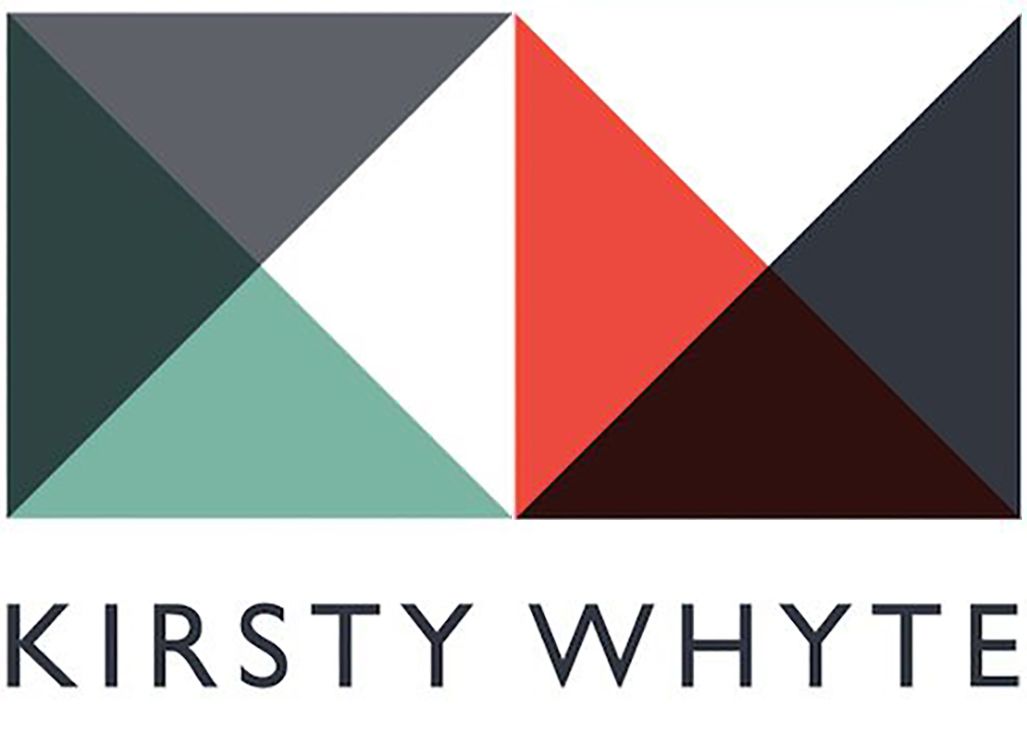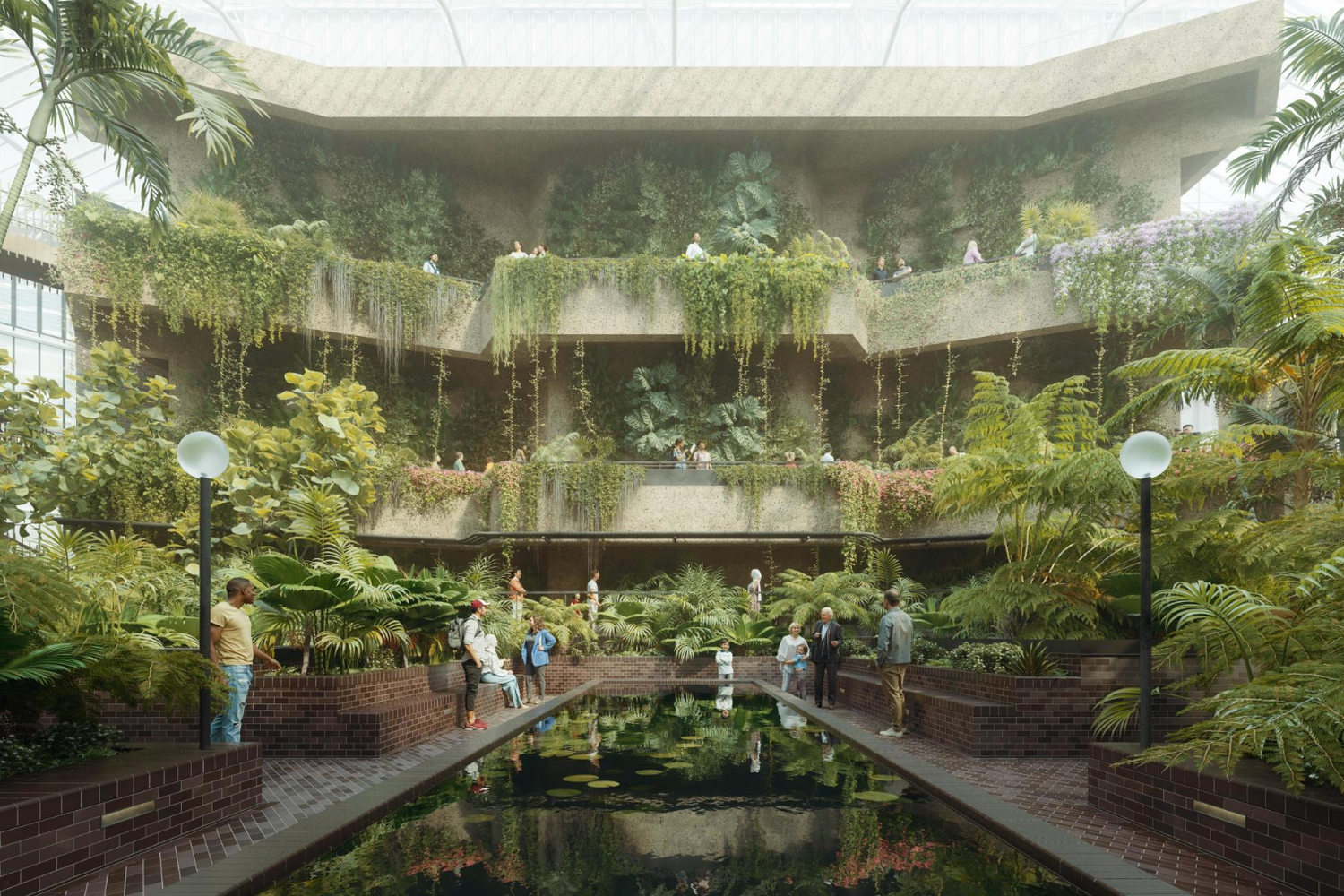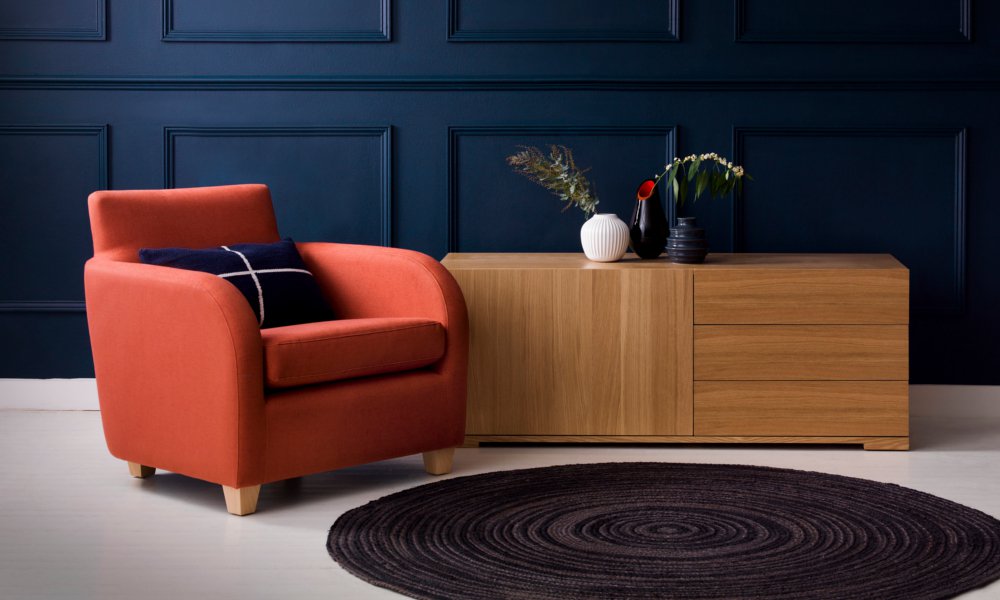Yesterday, during Clerkenwell Design Week, I went to a talk on the Barbican Renewal Project; something I’ve been quietly following for a while. I left feeling reflective, hopeful and even more obsessed with this beautiful concrete labyrinth. So I thought I’d share a few thoughts, both from the talk and from my own long-standing connection to the Barbican.
It turns out I’m a brutalist at heart. I’ve always said that one day; 'when I’m a proper grown-up' I’d love to own a little studio flat there as a pied-à-terre. My Instagram followers will know I can’t resist a brutalist skyline, especially when it’s set against a cloudless blue sky. There’s something deeply grounding and quietly dramatic about it.

Like many, I’ve developed a personal relationship with the Barbican over time. Growing up in Lincolnshire, I had no idea this hidden concrete wonderland existed in the middle of London. I first discovered it on a university trip, but I didn’t properly fall for it until years later, when I became a freelance designer in 2009. Working from my 'studio/bedroom', I often needed an escape to somewhere with Wi-Fi and creative energy. The Barbican became one of those places. (Side note: the National Theatre is another great spot for this; all those little desks and corners with coffee within reach.)
As the years went by, I began to learn the Barbican’s secret paths and layered corners. It really is "a city within a city". I’d go for summer walks, catch films (even 3D ones like Avatar), see exhibitions, dip into theatre shows, and have cultured lunches in the Barbican Kitchen. When I was running Freedom to Exist, our watches were stocked in the Barbican shop, and we did a beautiful shoot there with Anton Rodriguez, who also photographed and co-concepted the Barbican Residents book (forward by Katie Treggeton . If you’ve ever known a resident, you’ll know it unlocks a whole new secret world of the estate, from amazing view to little basins in the loo to the problematic waste disposal system.


Now, as a parent, I’ve discovered yet another side of the Barbican; the lush indoor Conservatory and the brilliant toddler-friendly performances & installations like "The Squish Space". One favourite was “To the Moon and Back,” a magical, multi-sensory show that stayed with us long after we left.

The talk itself, hosted by Manijeh Verghese for Open City and Sphere Spaces, brought together a brilliant panel to discuss the renewal project; Philippa Simpson, Director of Buildings and Renewal at the Barbican; Oliver Haywood from Allies and Morrison; and Neil Onions from Beyond the Box.
The Barbican, originally conceived after WWII as a bold vision for modern urban life, is now at a real turning point. This isn’t a surface-level spruce up. It’s the first major rethink of the space in decades, and what’s striking is how careful and considered the approach is. Allies and Morrison won the design competition by proposing something refreshingly modest: make better use of what already exists. This is about restoration rather than reinvention. About unlocking underused spaces and enhancing the experience without losing the Barbican’s unique character.

One of the most important themes that came through was access; both physical and emotional. The original layout wasn’t designed to confuse, but the result is undeniably tricky to navigate. Lifts that don’t reach key areas, dead-end staircases, difficult sightlines; it can feel a bit like a maze if you’re not familiar with it. What I didn’t know was that the arts centre itself was a later addition. The residential parts were completed first, and the arts centre had to squeeze into the footprint that remained, which is why so much of it lives underground.
Part of the renewal will fix that. A new staircase (with lift access) in the Conservatory is one example of how accessibility is being woven into the design, not bolted on as an afterthought. But beyond logistics, what really stood out was the focus on feeling. How people arrive is important, but so is how they experience the space once they’re in it.
There’s a delicate balance between making a place feel special and making it feel welcoming. Not everyone wants a curated Instagram moment. Some people just want a quiet corner to sit in and a sense that they belong. That sense of atmosphere, of permissiveness, is clearly being prioritised.
Neil Onions spoke particularly powerfully about the co-design process Beyond the Box led with a group of young Londoners aged 18 to 30. These were not tick-box focus groups. Twenty-four people were paid the London Living Wage and brought into the process as true collaborators. The architects and decision-makers didn’t just present to them, they sat alongside them and listened.
The insights that came out of those sessions were incredibly rich. From overlooked spaces and hidden stories to broader reflections on inclusion and mental wellbeing, the feedback has genuinely helped shape the project. It’s about rethinking how spaces are programmed, who they serve, and when. That kind of shift can completely change how a place like the Barbican is used and loved.

It’s also worth remembering the human scale of this work. The Barbican is home to over 4000 residents, which makes up the majority of its everyday community. Then there’s the City of London, all the internal teams, and of course the thousands of visitors. The scale of stakeholder engagement is massive, but what’s clear is that the team is approaching it with care and respect.
What I took away most of all is that this project isn’t about flashy change for the sake of it. It’s about stewardship. It’s about understanding what makes the Barbican so extraordinary and making sure it stays relevant and loved by the next generation. And yes, it does need a little love and attention.
I left feeling energised. If this is how we begin to approach the renewal of our cultural landmarks; not with ego but with empathy, then we really might be on to something. I, for one, can’t wait to watch it all unfold over the coming 15 years.

Here are a few renders from the project to see more click HERE


